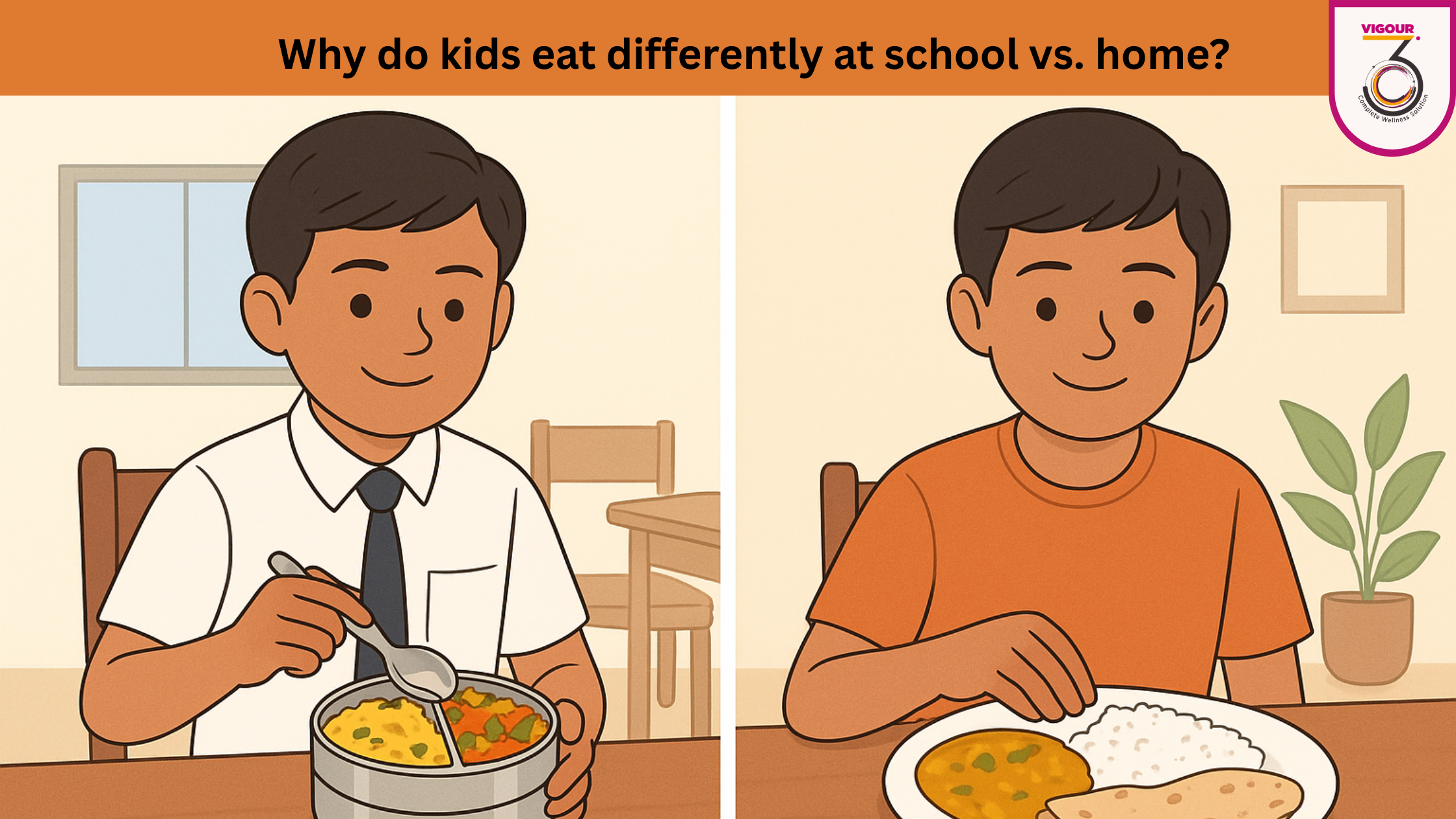
Every parent has faced this challenge—the tiffin box comes back from school half-eaten, no matter how carefully a healthy lunchbox was packed. At home, the same child may happily eat dal, rice, roti, or curry, yet at school their eating habits look completely different. Why does this happen?
The truth is, children’s nutrition at school is influenced by more than just what’s inside the box. Peer pressure, routine, the school food environment, and even their growing sense of independence all play a role. For parents, this can be frustrating and worrying, but understanding the why is the first step to finding solutions.
In this blog, we uncover the reasons why kids eat differently at school vs. home and share practical, science-backed strategies to help parents and schools ensure children enjoy balanced meals, develop mindful eating habits, and build a foundation for lifelong good health.
Children are highly influenced by peers. Studies show that kids are more willing to try new foods when they see their classmates eating them. This phenomenon, called social modeling, explains why a picky eater at home may suddenly try vegetables at school lunch.
At the same time, peer pressure can work negatively—children may reject healthy food if it’s not “cool” among their friends.
Insight for Parents & Schools:
At home, children may linger over meals with reminders from parents. At school, lunch breaks are fixed and short—often 20–30 minutes. Research shows that shorter eating times are linked to lower fruit and vegetable intake.
This “time pressure” can lead to unfinished lunches or prioritizing easy-to-eat snacks over balanced meals.
Insight for Parents & Schools:
The school food environment is very different from home: cafeterias, lunchboxes, peer lunch swaps children to foods they may not encounter daily at home. Research in public health highlights that school cafeterias strongly influence food choices, especially when unhealthy snacks are available.
Insight for Parents & Schools:
At home, children feel secure and may use food as a tool to express emotions (“I don’t want to eat this”). At school, they are often too distracted by friends, games, or activities to focus on eating. Some children may also feel shy about eating foods that look or smell different from their peers’ meals.
Insight for Parents & Schools:
School is where children begin exercising food independence. With pocket money, canteen access, or lunch swaps, they make their own food decisions. While this builds autonomy, it also risks promoting unhealthy patterns. A study found that children with greater unsupervised food choices often prefer energy-dense snacks over nutritious foods.
Insight for Parents & Schools:
When children skip meals at school, they often come home very hungry and end up overeating snacks instead of having a balanced meal. Peer pressure also plays a big role—if their friends prefer chips or sugary treats, kids are more likely to copy those habits, which can reinforce a preference for junk food. Over time, these inconsistent eating patterns can lead to poor nutrition, affecting not just their physical growth but also their focus, concentration, and overall well-being.
Practical Strategies for Parents and Schools:
Children eat differently at school and home not because they’re “fussy,” but because their environment, peers, and sense of independence shift between the two places. By working together, parents and schools can create consistent, supportive food environments that nurture lifelong healthy eating habits. For more nutrition related tips follow our blogs.
Comments (0)